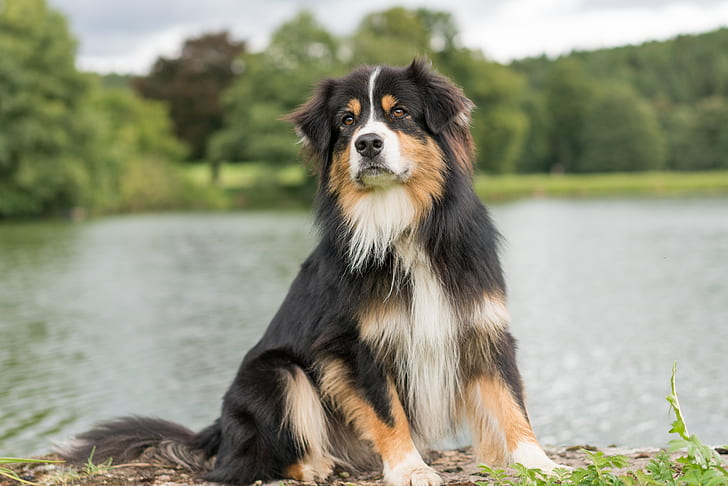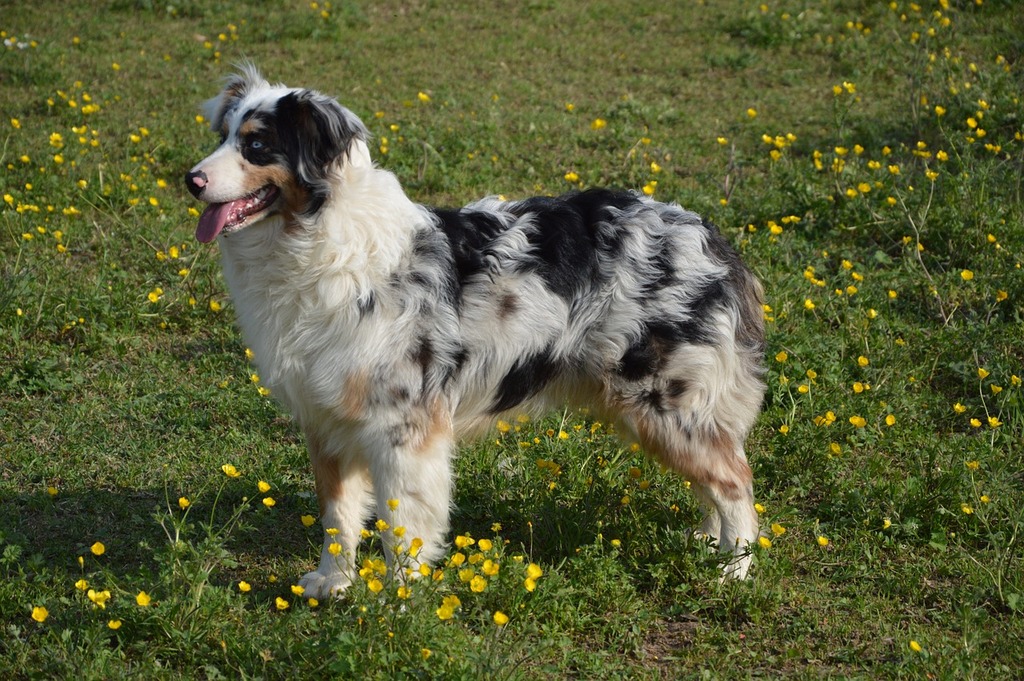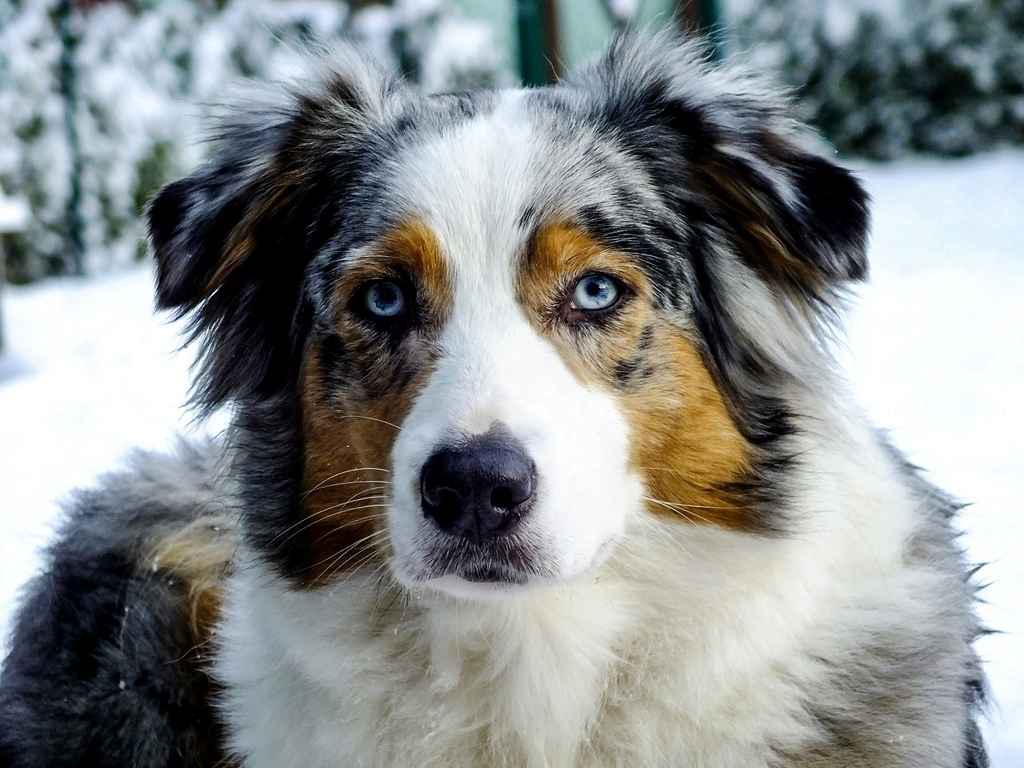The Australian Shepherd, often known for its vibrant energy and intelligence, stands out as a highly versatile breed. Originally bred for herding livestock, these dogs have transcended their pastoral roles to become beloved companions in homes worldwide. Their agility, combined with an eagerness to please, makes them excellent candidates for various canine sports and activities beyond their traditional duties. Despite their name suggesting an Australian origin, this breed was actually developed in the United States, gaining popularity for its work ethic and friendly demeanor. The Australian Shepherd’s adaptability to different environments and tasks underscores its reputation as a dependable and trainable member of the canine community.
Key Takeaways
- Australian Shepherds are highly energetic and intelligent dogs, making them excellent companions for active individuals or families.
- Regular exercise and mental stimulation are crucial for keeping an Australian Shepherd happy and healthy, as highlighted in the “Breed Overview” section.
- Proper health care, including regular vet check-ups and a balanced diet, is essential for maintaining the breed’s well-being, as discussed in the “Health And Care” section.
- Understanding the unique needs of living with an Australian Shepherd, such as their space and activity requirements, ensures a harmonious home environment.
- When considering adding an Australian Shepherd to your family, seek reputable breeders or adoption agencies that provide health clearances and support, as recommended in the “Breeder Advice and Adoption” section.
- Adopting an Australian Shepherd means committing to their training, socialization, and care, which leads to a rewarding companionship.
Breed Overview
History
The Australian Shepherd’s roots trace back to the Basque region of Europe, not Australia as its name might suggest. This dog breed was developed from a line of Europe’s finest herders. The Basque people, known for their excellent herding skills, moved to Australia and then to the United States in the 1800s, bringing their dogs with them. It was in the US that the breed was refined and named the Australian Shepherd.
Australian Shepherds gained popularity in the mid-20th century. They became famous for their role as herding dogs on ranches and farms. Their ability to herd livestock effectively made them invaluable to American farmers and ranchers.
Physical Characteristics
Australian Shepherds are medium-sized dogs known for their muscular build and agility. They possess a striking appearance, with a coat that comes in a variety of colors and patterns. These include merle, black, red, and tri-color. The merle pattern is particularly unique, producing a mottled effect that can result in blue merle or red merle coats.
One of the most distinctive features of Australian Shepherds is their almond-shaped eyes. These can be different colors, including blue, brown, or even one of each color. This adds to their expressive faces and enhances their overall appeal.
Personality and Temperament
Australian Shepherds are highly intelligent dogs with a deep loyalty to their families. They have high energy levels and require regular exercise to stay happy and healthy. Their intelligence means they pick up training quickly but also need mental stimulation to prevent boredom.
Their strong herding instinct can sometimes lead them to try herding children or other pets by nipping at their heels. However, with proper training and socialization from an early age, they learn to channel this behavior appropriately.
These dogs thrive on being given tasks and challenges which keep their minds active. Without enough stimulation, they may resort to destructive behaviors out of boredom. Thus, it’s crucial for Australian Shepherd owners to engage regularly in activities that keep these bright dogs mentally and physically stimulated.

Health And Care
Common Health Issues
Australian Shepherds are prone to several genetic conditions. Hip dysplasia, epilepsy, and certain eye disorders rank high among these. It’s crucial for owners to seek regular health screenings. These tests help in the early detection of potential issues.
Allergies and skin conditions also affect this breed frequently. Regular vet visits can keep these problems under control. Owners should stay vigilant for any signs of discomfort in their pets.
Dietary Needs
A balanced diet is vital for Australian Shepherds. Their energy levels are high, so their food should match this intensity. However, owners must be careful not to overfeed them. Obesity is a real risk for this active breed.
A mix of dry and wet food often works best. This approach ensures they get all the necessary nutrients for optimal health.
Exercise Requirements
Australian Shepherds need 1-2 hours of physical activity every day. Running, hiking, and agility training are excellent ways to keep them fit. Without enough exercise, these dogs may develop behavioral issues.
Their high energy demands an active lifestyle. Owners should make time daily for their pet’s physical needs.
Grooming
Regular brushing is essential for managing shedding in Australian Shepherds. Their double coat can mat if not cared for properly. Routine ear cleaning and nail trimming are also necessary.
During shedding season, their grooming needs increase significantly. Owners should prepare for more frequent brushing sessions during these times.
Living with a Australian Shepherd
Training and Socialization
Early socialization is key for Australian Shepherds. It helps prevent shyness or aggression as they grow. These dogs are highly intelligent, making them quite trainable. However, their smarts can sometimes lead to stubbornness. This means owners need to be patient and consistent.
Positive reinforcement works best for them. Rewards and praises make training sessions more effective. Consistency in commands and expectations is crucial. Without it, these clever dogs might try to bend the rules.
Environment
Australian Shepherds adapt well to different living situations, but there’s a catch. They need ample exercise to stay happy and healthy. A home with a yard is ideal for them to run around and play. Yet, they can live in smaller spaces too if they get enough outdoor time each day.
Leaving them alone for long hours isn’t advisable due to their social nature. They thrive on interaction with their human families. Lack of company can lead to boredom and potential behavioral issues.
Activities They Enjoy
Herding is in their blood, but that’s not all they love doing. Agility courses and fetch are among their favorite activities. Their intelligence and temperament also make them great for search and rescue or therapy work.
To keep their minds sharp, interactive toys and puzzles are excellent choices. These activities help prevent boredom and stimulate their brains, keeping them engaged and happy.

Breeder Advice and Adoption
Choosing a Breeder
When deciding to bring an Australian Shepherd into your home, selecting the right breeder is crucial. Look for breeders who prioritize the health of their dogs by conducting thorough health screenings. These tests can help ensure that puppies are less likely to develop common genetic conditions associated with the breed.
It’s also wise to ask for references from previous buyers and make a point of visiting the breeding site in person. This visit allows you to observe the conditions in which the puppies and adult dogs are kept, ensuring they live in a clean, caring environment.
Be cautious about purchasing Australian Shepherds from pet stores or online sellers who do not offer transparency about their breeding practices. Many of these sources may not provide the necessary health clearances or background information on the puppy’s parents. Avoid supporting unethical breeding practices by doing your diligence before making a purchase.
Adoption
For those considering adding an Australian Shepherd to their family, adoption is a valuable option to explore. Shelters and rescue organizations often have Australian Shepherds and mixes looking for new homes. Adopting can give a second chance to a dog in need.
Breed-specific rescues are also available and can be an excellent resource for those looking to adopt an Australian Shepherd. These organizations understand the breed well and can help match you with a dog that fits your lifestyle. When living with other pets, it’s essential to find an Australian Shepherd with the right temperament; many rescue organizations conduct assessments to ensure compatibility.
Top Dog Grooming Tools (Click Here)
Final Remarks
The Australian Shepherd stands out as a highly adaptable, intelligent breed, thriving in various environments and excelling in agility and obedience. Their need for regular exercise and mental stimulation is paramount, underlining the importance of active engagement from their owners. Health care and grooming are vital to their well-being, highlighting the necessity for prospective owners to commit to their long-term care. The process of selecting a reputable breeder or considering adoption requires careful thought, ensuring a good match between the dog and its future family.
For those contemplating the addition of an Australian Shepherd to their home, it’s crucial to weigh the responsibilities alongside the joys this breed brings. Their loyalty, intelligence, and versatility make them exceptional companions, but they demand time, dedication, and understanding. Potential owners should seek reputable sources for adoption or purchase, prioritizing the health and happiness of their future pet. Engaging with a community of Australian Shepherd enthusiasts can provide valuable insights and support throughout this rewarding journey.
Frequently Asked Questions
What is the average lifespan of an Australian Shepherd?
Australian Shepherds typically live between 12 to 15 years. Proper care and regular veterinary check-ups can contribute to a longer, healthier life.
How much exercise does an Australian Shepherd need?
An Australian Shepherd requires at least 1-2 hours of exercise daily. This breed thrives on physical activity and mental stimulation.
What are common health issues in Australian Shepherds?
Common health issues include hip dysplasia, epilepsy, and hereditary eye problems. Regular health screenings can help in early detection and management.
Can Australian Shepherds live in apartments?
While it’s possible, Australian Shepherds do best in homes with more space and a yard. They are highly energetic and require ample room to exercise.
What should I look for when choosing a breeder for an Australian Shepherd?
Look for breeders who conduct genetic testing and provide health clearances for the puppies’ parents. Responsible breeders will also allow you to visit and meet the puppy’s parents.
How often do Australian Shepherds need grooming?
Australian Shepherds need weekly brushing to manage their medium-length coat. During shedding season, more frequent grooming may be necessary to remove loose fur.
Is the Australian Shepherd good with children?
Yes, Australian Shepherds are generally good with children, especially when raised with them from puppyhood. They are loyal, protective, and can be playful companions for kids.






0 Comments